Maggie Panteli is pursuing a BA degree in History and is graduating May 2020 from Clark University. During the summer of 2019, she worked part-time as a Readers’ Services Page and as an assistant in the Graphic Arts Department cataloging stereographs. Her favorite cataloging job was working with the McLoughlin illustrations. Her time at AAS has strengthened her commitment research and learning.
Traditional history classes can sometimes skip over some of the juiciest stories in American history. One of the most lurid and salacious stories of the nineteenth century is the Beecher-Tilton Scandal that rocked New York City in the 1870s. In 1870, Mrs. Elizabeth R. Tilton confessed to her husband, Theodore Tilton, an author and abolitionist, that she had been romantically involved with their church reverend and close family friend Henry Ward Beecher, brother of Harriet Beecher Stowe. The Tiltons separately joined Plymouth Church in Brooklyn Heights, New York, in the early 1850s and were married there in 1855 by Beecher. Beecher and Theodore Tilton became close friends in the late 1850s through their civil rights work and remained close until the early 1870s when the affair became public.
The trio initially agreed to keep the affair quiet, but in 1872 Ms. Victoria Wodhull, the infamous woman’s suffrage activist, published a sensational article in Woodhull & Claflin’s Weekly demonizing Beecher, mainly for his lack of morals and hypocrisy. Woodhull, who Beecher had criticized earlier for her “Free Love” advocacy and radical politics, is thought to have used the knowledge she gained from her friendship with Theodore Tilton to expose Beecher for his deceitful behavior. In her article, Woodhull proclaims, “[T]hey [those that make the rules] act upon the new doctrines while they profess obedience to the old . . . organized hypocrisy has become the tone of our modern society. Poltroon, cowardice, and deception rule the hour.”
Woodhull adds that letters had been sent about Tilton, and there were rumors that he had been violent throughout the marriage, possibly even causing his wife to have a miscarriage, and that he had kept her locked up in their house. Throughout the article, Woodhull refrains from speaking ill about Mrs. Tilton; however, she does boldly call out Beecher’s transgressions and hints to rumors she had heard, or made up for the sake of a sensational article.
At the time this article was published, Beecher and the Tiltons continued to keep as quiet as they could about the affair. However, in July 1874, Theodore Tilton publicly accused Beecher of seducing his wife and committing adultery. In response, Beecher set up a Plymouth Church investigation to look into the affair. The investigation found that Beecher was innocent, but public opinion and frustration led Theodore Tilton to sue Henry Ward Beecher for “criminal conversation” (adultery) and “alienation of [his wife’s] affections,”’ in late 1874.
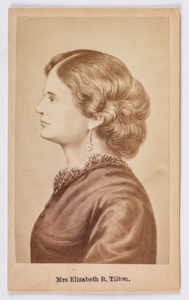
The civil case began in January 1875 and captivated the nation. While Beecher and Tilton both spoke at the trial, Elizabeth Tilton was unable to to do so because of spousal immunity. According to Richards Wightman Fox, in Trials of Intimacy, Elizabeth’s exclusion from the trial had little impact on the ruling because she was prone to changing her responses about the affair and was considered “untrustworthy”. At the end of a six month trial, the jury could not agree, and Beecher was finally acquitted. In 1878, Elizabeth Tilton issued her last confession that she did indeed have an affair with Henry Ward Beecher. At the time, it was still interpreted as a rumor or untrue at the time.
While there is a large amount of information available about Henry Ward Beecher, Theodore Tilton, and Victoria C. Woodhull, Elizabeth seemingly vanished from the public eye after she passed away in 1897. Despite being publicly defamed and pushed to the sidelines, she maintained a starring role in a drama-filled court case. Nevertheless, historians have focused on the famous men involved in the case and overlooked its most mysterious and interesting character: Mrs. Elizabeth M. Richards Tilton. After the trial ended in 1875, Theodore Tilton moved to Paris, France, leaving behind his family and friends. Elizabeth was forced to move back in with her mother in Brooklyn with her two youngest children. Little else is known about her life in those years after the trial ended. Even the American Antiquarian Society, which boasts a wide variety of both cataloged and uncataloged artifacts directly related to scandal, possesses only a single, non-political cartoon image of Elizabeth Tilton.
Through my unique position this summer at the American Antiquarian Society, as both a reference page and a graphic arts cataloger, I was able to conduct research and create records for uncataloged artifacts in the vast graphic arts collection. This included the only “picture” (actually only an artist’s rendering) of Mrs. Tilton, as well as a number of carte de visite, political cartoons, and portraits of Mr. Tilton and Mr. Beecher. Additionally, I was able to catalog a portrait of Victoria C. Woodhull and a fabulous political cartoon flip card of Mr. Beecher and Mrs. Tilton.
The flip card is titled “Don’t Expose Me” and it has a printed image of Mrs. Tilton standing among a garden with her hands in a dance position. Her skirt is not completely glued to the paper, and, when it’s lifted, Mr. Beecher stands under the skirt with his arms lifted in surprise.
Handling objects like these and looking closely in an attempt to accurately describe them during the cataloging process provided an opportunity to experience how printing, photography, and cartooning was used during the trial, which is often described as the largest “he said, she said” argument of the late 19th century in America. Studying events such as the Beecher/Tilton scandal and using ephemera and published trial material (also available at AAS), can contribute to understanding the cultural norms of America during the late 19th century. Now that they are cataloged, all these artifacts are findable and available for research purposes to anyone who comes to the American Antiquarian Society or uses the General Catalog. Perhaps more information about the life of Elizabeth Tilton will be uncovered and written about in the future.
For Further Reading:
Fox, Richard Wightman. Trials of Intimacy: Love and Loss in the Beecher-Tilton Scandal. 1st ed., University of Chicago Press, 1999. Housed at the American Antiquarian Society.
Woodhull, Victoria C. “The Beecher-Tilton Scandal Case: The Detailed Statement of the Whole Matter by Mrs. Woodhull.” Woodhull & Claflin’s Weekly , 2 Nov. 1872, pp. 9–13. Housed at the American Antiquarian Society.
McDivitt, Campbell, & Co., Law Publishers, No. 79 Nassau Street. Theodore Tilton vs. Henry Ward Beecher, Action for Crim. Con. [I], [II], V, VII, and XVII-XVIII, 1875. Housed at the American Antiquarian Society.

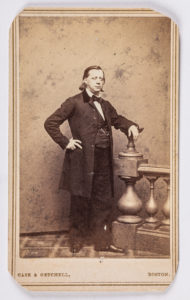
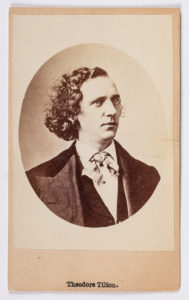
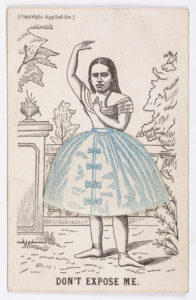
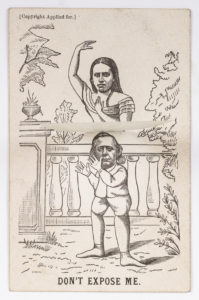
Another study that delves deeply into the Beecher-Tilton affair–based in part on research at AAS–is Debby Applegate, _The Most Famous Man in America: The Biography of Henry Ward Beecher_ (Doubleday, 2006). She won the Pulitzer Prize for Biography and Autobiography for this work in 2007. Incidentally, Applegate recalls that her interest in Beecher was piqued while she was a student at Amherst College!